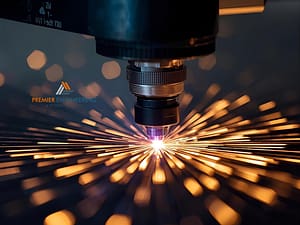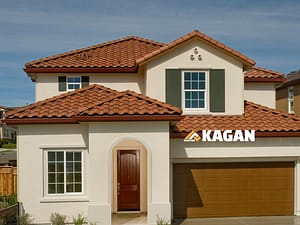CNC (Computer Numerical Control) cutting represents a cornerstone of modern manufacturing, offering unparalleled precision, efficiency, and versatility across a wide array of materials. By automating the cutting process through computer-guided machinery, CNC cutting eliminates human error, optimizes material usage, and significantly reduces production times. This technology is instrumental in producing intricate designs and exact replicas of parts, making it indispensable in industries ranging from aerospace to furniture making.
The integration of CNC cutting with other manufacturing processes is crucial for developing complex assemblies and enhancing overall production efficiency. By combining CNC cutting’s precision with techniques like 3D printing, injection molding, and welding, manufacturers can create components and assemblies with complex geometries that would be difficult, if not impossible, to achieve through single-process fabrication. This multidisciplinary approach not only accelerates the prototyping phase but also streamlines the transition from prototype to full-scale production, ensuring that the final products meet the highest standards of quality and functionality.
CNC Cutting and 3D Printing for Prototyping
The synergy between CNC cutting and 3D printing has revolutionized the prototyping phase of product development. While CNC cutting offers accuracy and a smooth finish on a variety of materials, 3D printing brings the ability to create complex, layered structures with ease. Together, these technologies provide a comprehensive toolkit for rapid prototyping, allowing designers and engineers to experiment with designs and test functionalities more swiftly and cost-effectively than ever before.
Benefits of Combining These Technologies
- Rapid Iteration: The speed of 3D printing, combined with the precision of CNC cutting, enables faster iteration of prototypes, reducing the time from concept to final design.
- Material Versatility: While 3D printing excels with plastics and resins, CNC cutting can handle a broader range of materials, including metals, wood, and composites, allowing for prototypes that closely mimic the properties of the final product.
- Design Verification: Using both processes allows for thorough testing of designs under real-world conditions, ensuring that any issues are identified and addressed early in the development cycle.
Considerations for Selecting Between CNC Cutting and 3D Printing
- Material Requirements: The choice between CNC cutting and 3D printing often depends on the material best suited for the prototype. CNC cutting is preferred for harder materials, while 3D printing is ideal for complex designs with lighter materials.
- Precision and Tolerance: For projects requiring extreme precision and tight tolerances, CNC cutting is often the better choice. 3D printing, while precise, may not always match the exacting standards achievable with CNC machining.
- Cost Implications: The cost-effectiveness of each method varies with the project’s scale and complexity. CNC cutting, with its higher setup costs, may be more economical for larger runs, whereas 3D printing can be more cost-effective for small batches of complex designs.
Synergy Between CNC Machining and Injection Molding
The manufacturing landscape is increasingly characterized by the integration of various techniques to optimize production efficiency and product quality. A prime example of this integration is the synergy between CNC machining and injection molding, which combines the precision of CNC-cut prototypes with the scalability of injection molding for mass production.
Workflow from CNC-Cut Prototypes to Injection Molding
The journey from concept to mass production often begins with a prototype, precisely crafted through CNC machining. This prototype serves multiple purposes: it validates the design, tests functionality, and, crucially, can be used to create the molds necessary for injection molding. Once the design is finalized and approved, CNC machining is employed again, this time to create the high-precision molds needed for the injection molding process. These molds must meet exact specifications to ensure that the final products are consistent and meet quality standards.
The Role of CNC Machining in Creating Precise Molds
CNC machining’s ability to work with a diverse range of materials and its precision in cutting intricate designs make it ideal for mold making. The molds created are durable, capable of withstanding the high pressures and temperatures of the injection molding process, and can be used to produce large volumes of parts with remarkable consistency.
Strategies for Seamless Transition from Prototype to Production
- Design Optimization: Early collaboration between design engineers and CNC machinists can identify potential production challenges and optimize the design for manufacturability.
- Material Selection: Choosing the right material for both the prototype and the mold is crucial, as it affects the durability of the mold and the quality of the final product.
- Testing and Validation: Thorough testing of the CNC-machined prototype and the initial injection molded parts ensures that the transition to mass production will be smooth, minimizing the need for costly adjustments.
Creating Complex Assemblies Through Multi-process Integration
The manufacturing of complex assemblies often necessitates the integration of multiple processes, with CNC cutting serving as a foundational technique complemented by other methods such as welding, bending, and assembly.
Examples of Manufacturing Processes Integrated with CNC Cutting
- Welding: CNC-cut parts may require welding for assembly or structural reinforcement. Precision cutting ensures that components fit perfectly, reducing the time and effort needed for welding.
- Bending: For components that need shaping, CNC cutting can prepare parts with exact dimensions before bending processes are applied, ensuring accuracy and consistency.
- Assembly: CNC cutting is critical for creating components that fit seamlessly together, simplifying the assembly process and enhancing the structural integrity of the final product.
Techniques for Ensuring Compatibility and Precision
- Unified Design Software: Using CAD/CAM software that integrates design and manufacturing processes helps ensure compatibility across different manufacturing methods.
- Standardization: Standardizing materials and processes as much as possible can reduce errors and improve efficiency.
- Quality Control: Implementing rigorous quality control at each stage of production ensures that each process contributes to the overall precision and quality of the final assembly.
Tips for Planning and Executing a Multi-process Manufacturing Project
- Comprehensive Planning: Detailed planning that considers each step of the manufacturing process can identify potential bottlenecks and optimize workflow.
- Collaboration: Encouraging open communication and collaboration among teams responsible for different stages of production can lead to innovative solutions and process improvements.
- Flexibility: Being prepared to adapt plans based on feedback from each stage of production ensures that the project remains on track and meets its quality and time objectives.
Software and Tools for Process Integration
In the realm of manufacturing, the seamless integration of CNC cutting with other processes is facilitated significantly by the use of advanced CAD/CAM software solutions. These software platforms are designed to bridge the gap between design, simulation, and production planning, offering a unified environment that enhances efficiency and precision.
Overview of CAD/CAM Software Solutions
CAD (Computer-Aided Design) and CAM (Computer-Aided Manufacturing) software solutions play a pivotal role in modern manufacturing workflows. They allow for the detailed design of parts and assemblies, which can then be directly translated into machine instructions for CNC cutting and other processes. Popular software platforms like Autodesk Fusion 360, SolidWorks, and Mastercam provide comprehensive tools that cover everything from initial design to final production.
Benefits of Using Integrated Software Platforms
- Streamlined Workflow: Integrated software solutions reduce the need for multiple software packages, streamlining the workflow from design to production.
- Enhanced Collaboration: These platforms facilitate better communication and collaboration between design and manufacturing teams, ensuring that designs are feasible and optimized for manufacturing.
- Improved Efficiency: The ability to simulate and plan manufacturing processes within the same software package reduces errors and iterations, speeding up the time to production.
Key Features to Look for in Software to Support Multi-process Integration
- Compatibility with Diverse Manufacturing Techniques: Software should support a wide range of manufacturing processes, from CNC cutting to 3D printing and injection molding.
- Simulation Capabilities: The ability to simulate manufacturing processes helps identify potential issues before they occur in the physical world.
- Collaborative Tools: Features that allow for easy sharing and collaboration on projects are essential for coordinating between different teams and disciplines.
Challenges and Solutions in Process Integration
Integrating CNC cutting with other manufacturing processes presents several challenges, from technical hurdles to communication barriers. However, with strategic planning and the right tools, these challenges can be effectively overcome.
Common Challenges
- Technical Compatibility: Ensuring that different processes and materials are compatible can be complex, requiring detailed planning and testing.
- Communication Gaps: Differences in terminology and priorities between teams can lead to misunderstandings and errors.
- Workflow Optimization: Balancing the workflow across different processes to avoid bottlenecks and ensure timely production can be challenging.
Solutions and Best Practices
- Comprehensive Planning: Early and detailed planning involving all stakeholders can identify potential compatibility and workflow issues before they become problematic.
- Regular Communication: Establishing regular meetings and updates between teams helps ensure everyone is on the same page and can adapt to changes or challenges as they arise.
- Quality Control Measures: Implementing rigorous quality control at each stage of production, with clear criteria and checkpoints, ensures that the final product meets all specifications.
Conclusion
The integration of CNC cutting with other manufacturing processes represents a significant advancement in production capabilities, offering enhanced efficiency, quality, and flexibility. By leveraging the power of integrated software platforms, manufacturers can streamline their workflows, improve communication between teams, and optimize the entire production process from design to finished product. However, achieving seamless process integration requires careful planning, effective communication, and a commitment to quality at every stage.










